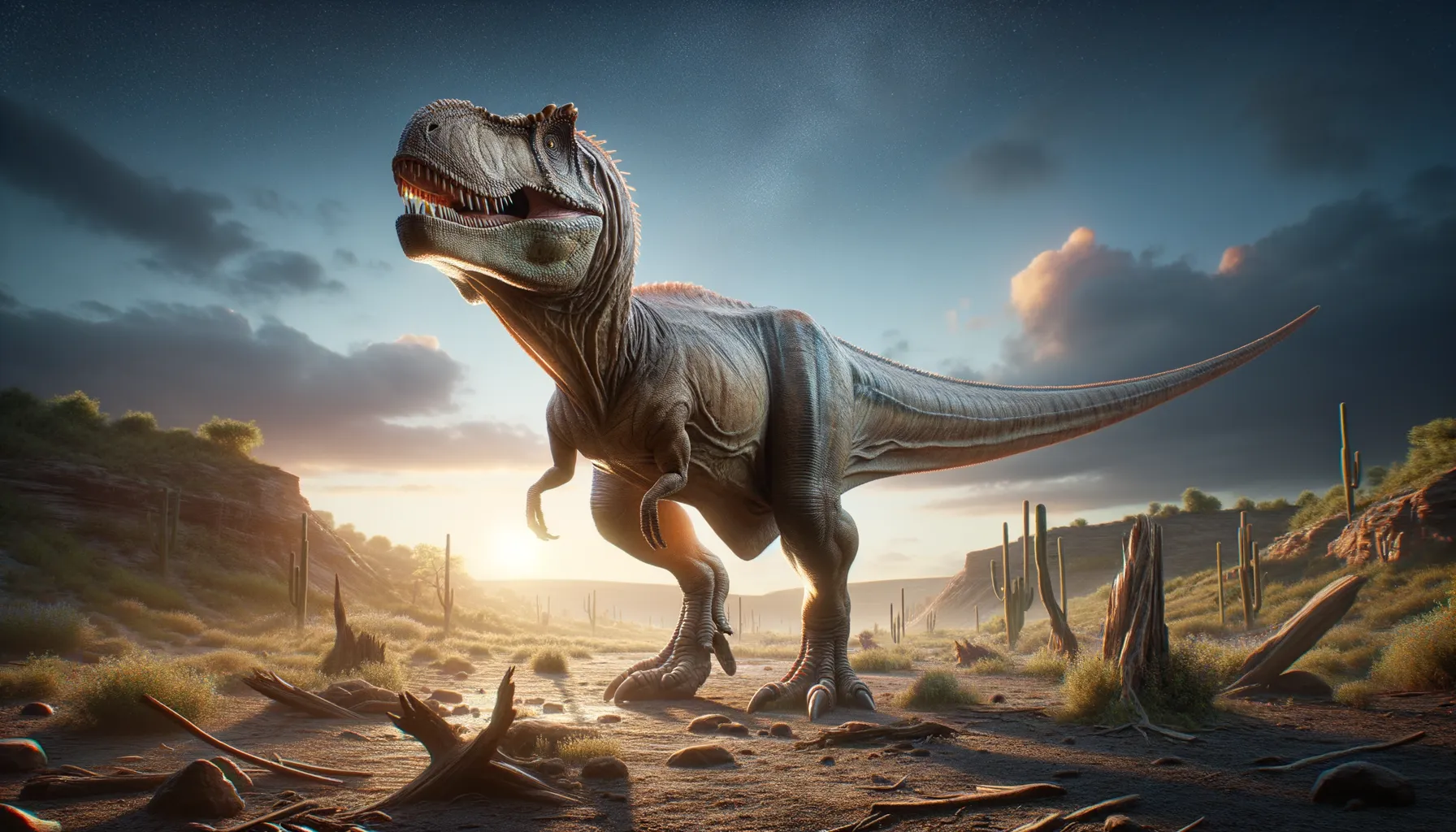
Indosuchus
Fierce predator of ancient India.
Period
Cretaceous
Length
Up to 23 feet long.
Height
Approximately 7 feet tall at the hips.
Weight
Around 2 tons.
Indosuchus was a carnivorous dinosaur that roamed the region of present-day India during the Late Cretaceous period. Believed to be a fierce predator, it was a member of the family Abelisauridae. With a notable crest on its skull and a robust body, Indosuchus had adaptations suited for a predatory lifestyle. Its fossils provide insight into the predatory behaviors of theropods in Indian ecosystems before the mass extinction.
Diet
Indosuchus was carnivorous, preying on other dinosaurs. Its strong teeth and jaw structure suggest it could tackle various prey.
Hunting
Indosuchus likely relied on its agility and strength to hunt. It might have ambushed prey using its keen senses and formidable jaw.
Environmental challenges
Indosuchus lived in a time of dynamic environmental changes. As its habitat shifted, it had to adapt to varying food availability. The temperature changes of the late Cretaceous might have influenced its survival tactics. Competition with other predators would have posed additional challenges.
Speed
It likely moved at a moderate pace.
Lifespan
Unknown but possibly around 20 years.
First discovery
Discovered in India in the early 1930s.
Fun Facts
- Indosuchus was a carnivorous dinosaur that lived approximately 70 million years ago during the Late Cretaceous period.
- The name 'Indosuchus' means 'Indian crocodile', reflecting its reptilian appearance and the country where its fossils were found.
- Fossils of Indosuchus have been discovered in the Narmada Valley in India, making it one of the few dinosaurs known from the Indian subcontinent.
- Indosuchus belonged to a group of dinosaurs known as theropods, which also includes the famous Tyrannosaurus rex.
- It is believed to have been a top predator in its environment, preying on other dinosaurs and possibly even scavenging when necessary.
- Indosuchus likely had a crest on its head, which might have been used for display or species recognition.
- The discovery of Indosuchus fossils in India provides important insights into the ancient ecosystems of the region during the Late Cretaceous.
Growth and Development
Young Indosuchus would have grown rapidly to avoid predation. Reaching maturity meant developing stronger hunting skills. Physical changes like the development of its crest occurred as it aged. Fossil studies can provide insights into its life stages.
Habitat
Indosuchus thrived in the tropical climates of ancient India. It lived in a diverse ecosystem with rivers, forests, and plains. Its habitat was rich in prey, including smaller dinosaurs and reptiles. Seasonal changes impacted its food and water supply.
Interaction with other species
Indosuchus coexisted with various herbivorous and other carnivorous dinosaurs. It competed fiercely for resources with other large predators. Its presence influenced the behavior of herbivores, possibly leading to migration patterns. Mutual interactions helped shape the ecosystem dynamics.
Natural lifespan
Indosuchus may have lived up to 20 years in natural conditions.
Reproduction
Indosuchus likely laid eggs like other theropods. Nests would have been placed in secluded areas for protection. Parental care could have included guarding the nest from predators. Fossilized eggs and nesting sites can provide more clues.
Social behaviour
Indosuchus might have exhibited solitary hunting habits. It could have shown territorial behavior, especially during breeding seasons. Any social interactions were possibly limited to mating periods. Its roar or scent could have marked its territory.
Fossil locations
Indosuchus fossils have primarily been found in the region that is now India. The first significant finds were made in the early 20th century. Fossils were discovered in the Lameta Formation, a significant dinosaur fossil site. These discoveries have assisted paleontologists in understanding Cretaceous fauna in India.
